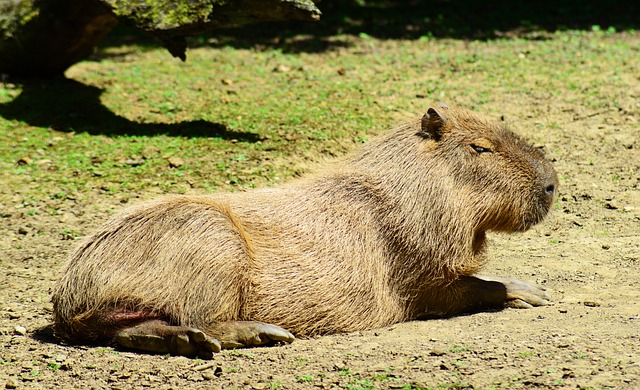Like the rest of Europe, Finland experiences a climate and ecosystem that differ significantly from the capybara’s native environment.
As a result, capybaras do not naturally occur in Finland’s wild landscapes.
Their presence in Europe is limited to controlled environments where conditions necessary for survival are artificially maintained.
Capybaras in Finland
Capybaras are not native to Finland, and the country’s climate is not ideal for these tropical animals. Efforts to introduce them into this region could face significant regulatory challenges.
Habitat and Climate Suitability
Capybaras are native to South America and thrive in warm climates with access to water bodies. Finland’s colder temperatures and long winters make it an unsuitable habitat for capybaras, as they require environments where the temperature rarely drops below 10°C (50°F).
- Temperature Range: Capybaras are accustomed to 24°C – 30°C (75°F – 86°F)
- Water Access: Ponds, rivers, and marshes are essential for their survival
Capybara Presence and Observations
There have been no official reports of wild capybaras living in Finland. Any capybaras present in the country would likely be found in zoological settings or as exotic pets under controlled conditions.
- Zoos: Possible controlled environments
- Private Ownership: Rare and typically regulated
Regulations and Legal Status
In Finland, the importation and keeping of exotic animals are subject to strict regulations. Capybaras fall under this category, requiring permits and compliance with welfare standards.
- Importation: Must meet Finnish Customs and Finnish Food Authority criteria
- Animal Welfare: Compliance with the Animal Welfare Act is mandatory
Capybaras in Europe
Capybaras, native to South America, are not found in European wild populations. However, they can be seen in various European zoos and may be held by private owners.
Wild Populations and Distribution
There are no wild populations of capybaras in Europe. These large rodents are indigenous to South America and require warm climates and access to plentiful water bodies.
Zoos and Private Ownership
In Europe, capybaras are commonly found in zoos. They are kept in conditions that replicate their natural habitat to some extent. Some European countries, such as the United Kingdom, Germany, and Spain, have zoos that display capybaras to the public.
Private ownership of capybaras in Europe is subject to local laws and regulations, which vary by country. Private individuals who own capybaras typically require special licenses and must provide appropriate care, including a suitable environment with enough space and water for swimming.




